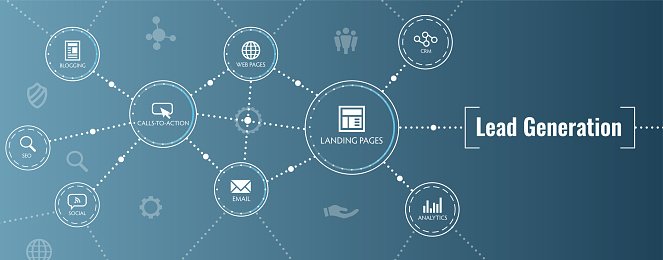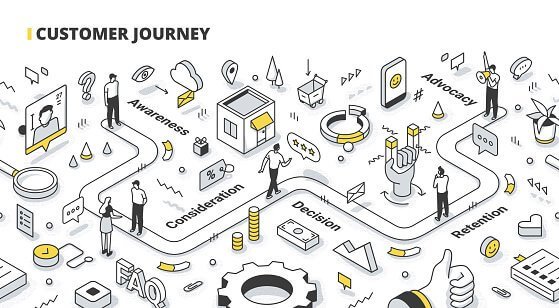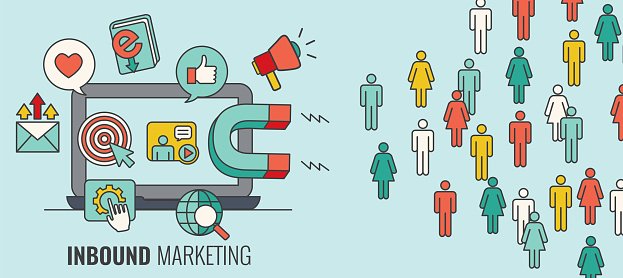
Demand Generation Vs. Inbound Marketing Vs. Lead Generation
If You Don’t Know What Strategy You’re Using, You Might Be Disappointed In The Results
Demand generation, lead generation, inbound marketing and other tactics like account-based marketing (ABM) and content marketing are making finding a guiding principle to direct your company’s marketing strategy an extra complicated exercise today.
In simple terms, if you start with tactics before you’ve figured out your strategy, you’ll end up with what we call random acts of marketing and less-than-expected results. The fix for this is a clear go-forward strategy. Are you practicing demand generation or inbound marketing, or are you simply trying to generate as many leads as possible? There is a difference.
It probably makes sense to back up a bit and provide some definitions, just so we’re all clear exactly what we’re talking about.
Drift defines demand generation as “any activity that drives awareness and interest in your product or service with the ultimate goal to create a predictable pipeline that will grow your business.” While leads are an outcome of demand generation, they’re NOT the main objective. The main goal is pipeline value, pipeline growth, pipeline acceleration and high-quality sales leads for reps.
Lead generation is very simple. It’s the creation of leads for an organization, typically marketing-qualified leads (MQLs). While quality is important, they are usually early-buyer-stage leads – in other words, people who are filling out forms and collecting educational content.
HubSpot, which created the term inbound marketing, defines it as “a business methodology that attracts customers by creating valuable content and experiences tailored to them. While outbound marketing interrupts your audience with content they don’t always want, inbound marketing forms connections they are looking for and solves problems they already have.”
A Deep Dive Into Demand Generation
Today, the big question around demand generation is what exactly demand means. Does it mean leads, sales-qualified leads (SQLs) or sales opportunities? Depending on what you read or who you talk to, the answer might change.
But as far as we’re concerned at Square 2, it’s about quantifiable sales opportunities or pipeline value.
Demand generation today also means having ungated content and creating a ton of content. In short, you’re going to create content at scale to drive demand.
The content will build brand awareness, and that awareness will translate into more people knowing you, visiting your website, engaging with your content and then ultimately feeling comfortable enough with you as a company to reach out when they are ready to engage with sales in legitimate buying conversations.
If this approach makes sense to you, then there are a few concepts worth discussing – concepts you might or might not be comfortable with.
Concept 1 – You’re not tracking marketing-qualified leads (MQLs).
Yes, the key indicator of marketing success (the MQL) isn’t as relevant in demand generation programs. Why? The first reason is the work to generate an MQL doesn’t always align with the work to generate a high-quality sales opportunity.
That might be worth discussing in more detail. But in short, the best way to generate MQLs is to gate everything and push these leads to new business representatives (NBRs) who prequalify and then route only qualified leads to an account executive (AE) or sales rep. This is more of an inbound model, which we’ll cover later, but there is a lot of inefficiency in this model.
A lot of time is spent talking to, tracking and collecting info from people who might never buy. Tracking MQLs in many cases doesn’t always equate to revenue growth.
Instead, demand generation programs flood the market with accessible educational content, and MQLs are not tracked or measured. Instead, what gets measured are late-stage buyer journey engagements, which usually signal buying intent.
Concept 2 – You have to create content at scale.
Demand generation is a lot about building brand awareness. This takes content, and a ton of it, including content for social, content for your website, content for search, content with partners, video, podcasts and programmatic content like live webinars, ask-me-anything sessions or office hours.
The more content you generate, the more content you distribute and the more content you share, the more brand awareness you create and the more people visit your website when they’re ready to buy.
It also should go without saying that this content has to be excellent. It must be thought-leadership-level, disruptive, thought-provoking and attention-grabbing content. It needs to be so good that people are talking about it and sharing it on their own.
Of course, you’re giving all of this content away without asking for contact information. This is the major difference between inbound and demand generation.
Concept 3 – The metrics are all focused on revenue and business outcomes.
Most marketers like to track website visits, new contacts (MQLs), social media metrics, rankings for keywords and other website metrics like time on site. Demand generation marketers are looking at more revenue-related metrics.
Some of those include qualified sales opportunities, pipeline value increases, acceleration of pipeline (which we call pipeline velocity), percentage of pipeline from demand gen vs. sales outbound activities and percentage of revenue booked from demand-generated leads.
It’s a more business focus measurement system, but it means you’ll need alignment across marketing, sales, finance and leadership if this is how you want to measure the performance of your marketing.
Concept 4 – Demand generation encourages you to buy attention.
There are places where you can buy your way into the awareness stream of potential customers. Social media platforms are one of those places. You can buy ads on Facebook, LinkedIn, Instagram and other platforms.
These ads can be targeted to your prospect personas. These ads can serve up your ungated educational content and drive awareness for your brand and maybe even actual interest in your company.
You can buy attention on search engines like Google with Google search ads, you can buy attention on content platforms with content syndication, you can buy retargeting ads that follow your prospects around the web and you could attempt to buy attention by purchasing content information and then doing one-to-one outreach to generate demand.
You should be aware that demand generation requires enough budget to support these types of campaign tactics, too.
Overall, I think taking a demand generation approach to growth is an excellent strategy. I think it’s a more advanced approach for more sophisticated organizations. I think it takes seasoned marketing and business leaders to understand the budget, timing and requirements of a demand generation program. But I also think it’s the best way to create scalable, repeatable and predictable revenue growth in 2021 and beyond.
What Does Inbound Marketing Look Like Today?
Inbound marketing, on the other hand, has always been about earning attention instead of buying it. The core philosophy around inbound is that when your prospects start looking for you, you show up and you’re able to engage with them.
Some people consider inbound to be a reactive strategy that involves waiting around, whereas demand generation is seen as more proactive because it involves taking the message out to prospects.
Historically, inbound marketing has always included a gated approach to content and an aggressive nurture tactic after the initial conversion. It has also included a heavy dose of search engine optimization (SEO) to drive early-stage leads.
The content requirements are probably equally as significant with inbound compared to demand generation. Content drives the SEO results, nurture conversations and conversion on the website.
The major difference and the major downside of inbound is that it takes time. Demand generation also takes time, but at least you’re proactive in serving content and ads to targeted prospects. Inbound is much more about building it and they will come.
With that being said, what I’m describing is pure inbound born in 2008 at HubSpot. Today’s inbound doesn’t look anything like what HubSpot was proposing in 2008.
Today, many inbound practitioners are using other tactics from demand generation and advertising playbooks.
While I’m an inbound marketer at heart, and I believe we should be earning attention instead of buying it, I’m also highly practical. I’ve seen many scenarios with clients where inbound just isn’t enough to move the needle and demand generation is a requirement.
Today, Square 2 has blended demand generation into our inbound approach. We lean heavily on demand generation campaigns to drive results for clients. I think in 2021 this is the only reasonable approach.
 How Does Lead Generation Fit In?
How Does Lead Generation Fit In?
When you ask someone to define marketing’s contribution to the business, the answer is almost always provided in the number of leads generated. When CEOs come to talk to us about their businesses, they almost always equate their challenge to “not enough leads.”
I think this is some old-school thinking when it comes to company growth and revenue generation. After all, leads aren’t really what CEOs want. They want their companies to grow. Most of the time, when we generate more leads for our clients, their companies don’t grow —meaning other issues are there worth talking about.
You might be thinking you need more leads. You might be thinking that your sales team is good enough and more leads are all you need. You might be thinking once you get you more leads you can take the program in-house and run it on your own.
But the reality is much different. It’s not about more leads. What if those leads are of poor quality? What if those leads are high-quality companies but never close? What if those leads represent a single person who is just part of the buying team? How do you reach the other six people involved in the purchase decision? What if those leads are qualified and high quality but your sales team can’t close them or doesn’t deliver a consistently positive experience?
The answer is the same. Your company won’t grow. It won’t flourish and it won’t thrive. It will languish, and while you’ll blame and most likely fire the agency or CMO working to help you generate those leads, you’ll never realize the actual mistake in your strategy.
The Key To Growth Is A Long-Term Strategy
Whether you pick demand generation, inbound marketing or some other tactics posing as a marketing approach, the key to scaling the growth of your business is creating a long-term strategy.
But understand that you’re trying to create a remarkable experience for your prospects and customers, make it a companywide initiative, stick with it for the next five years, invest in it properly, staff it with smart and experienced pros, fuel it with highly educational, entertaining and engaging content, and then give it the time to blossom and grow.
Call it demand gen, call in inbound, call it Alice or call it whatever you want. No matter what you call it, if you don’t do all of those things mentioned above, your business won’t grow.

CEO and Chief Revenue Scientist
Mike Lieberman, CEO and Chief Revenue Scientist
Eliminate Hit-or-Miss Marketing Moves
Get advice, tips, tools and guidance to generate more leads for your company in this weekly email newsletter.



Eliminate Hit-or-Miss Marketing Moves
Get advice, tips, tools and guidance to generate more leads for your company in this weekly email newsletter.















